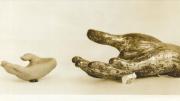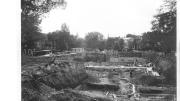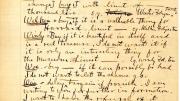Thanks to two grants that recognized the importance of the textual raw materials of art history, the Harvard Art Museums have cataloged approximately 13,800 folders of records from 1895 to the present, the University has announced: everything from documents that trace the escape of Jewish curators and art historians to America from Nazi-occupied Europe to correspondence from famous artists and writers such as T.S. Eliot, A.B. 1910, Litt.D. ’47.
The grants, awarded in 2007 by the Getty Foundation and the Institute of Museum and Library Services’ (IMLS) Museums for America program, have helped enrich the archives’ research tools, such as online finding aids and detailed listings available for scholars, students, and the general public worldwide. An integral part of cataloging was the creation of “in-house” processing notes for each collection—a system that enables researchers to view the entire documented history of the particular art object they are studying.
“During the grant period alone, the department fielded over 3,500 reference queries, most of them using the online finding aids, or detailed listings of records available, that the grants helped create,” wrote Jennifer Aubin, public relations manager for Harvard Art Museums, in a press release. “The grants have thus brought the Archives more in line with the teaching mission of the Harvard Art Museums, and with many more parts of the collection accessible, use has increased substantially.”
The cataloged material includes items of rich historical value, such as early exhibition records and the papers of Edward W. Forbes and Paul J. Sachs, director and associate director, respectively, during the first half of the twentieth century; and correspondence from Georgia O’Keeffe, Alfred Barr, Alexander Calder, Ben Shahn, and John Singer Sargent, among others.
“These collections not only illuminate the growth and development of the field of art history, but also highlight the adoption and evolution of the museums’ teaching mission, showing how the museums became a premier training ground for art historians as well as museum administrators, curators, and conservators,” Aubin noted.











